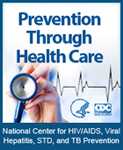CDC launches first national campaign to increase hepatitis B testing among Asian Americans and Pacific Islanders
Press Release
For immediate release: Wednesday, June 12, 2013
Contact: National Center for HIV/AIDS, Viral Hepatitis, STD, and TB Prevention
(404) 639-8895
NCHHSTPMediaTeam@cdc.gov
Today, the Centers for Disease Control and Prevention launched Know Hepatitis B, the first national multilingual, multi-year communications campaign to increase testing for hepatitis B among Asian Americans and Pacific Islanders. Though this group makes up less than 5 percent of the U.S. population, they account for more than half of the 1.2 million Americans estimated to be living with hepatitis B.
The campaign aims to reach millions of Asian Americans and Pacific Islanders, particularly those that need information in their languages. The campaign is a partnership between CDC and Hep B United, a nationwide coalition of community organizations working to increase hepatitis B awareness and testing.
“If you or your parents were born in Asia or the Pacific Islands, it is critical that you get tested for hepatitis B,” said Howard Koh, M.D., assistant secretary for health at the U.S. Department of Health and Human Services. “Everyone in the Asian American community – from individuals, to community leaders, to physicians – can all help us put an end to this epidemic by getting tested and talking about hepatitis B.”
In the U.S., Asian Americans and Pacific Islanders are one of the groups hardest hit by hepatitis B, which can cause potentially fatal liver damage, including liver cancer. Hepatitis B-related liver cancer is a leading cause of death among many in these communities. Hepatitis B is especially common in many Asian and Pacific Island countries, and many with chronic hepatitis B became infected as infants or young children. It is usually spread when someone comes into contact with blood from someone who has the virus.
It is estimated that 1 in 12 Asian Americans and Pacific Islanders is living with hepatitis B. Yet, as many as 2 in 3 living with the virus do not know they are infected, because the disease often has no symptoms until serious liver damage has already occurred. Testing allows those with hepatitis B to take steps to protect their health, including starting treatment that can delay or reverse the effects of liver disease.
“Hepatitis B is one of the most severe health disparities facing Asian Americans and Pacific Islanders,” said John Ward, M.D., director of CDC’s Division of Viral Hepatitis. “With greater awareness and testing, we can save lives and decrease the burden of hepatitis B in Asian American communities and throughout the United States.”
Know Hepatitis B is designed to resonate with those most affected by hepatitis B, and was developed with input from Asian Americans and Pacific Islanders from around the country. It will deliver culturally relevant messages in multiple languages, including English, Chinese, Korean and Vietnamese, through a wide range of channels, including:
- Online and print ads and public service announcements in media outlets serving Asian American and Pacific Islander communities
- Social media and digital materials to encourage testing
- Outreach led by Hep B United and its local partners to mobilize communities to get tested
- Outreach to health professionals to educate them on the importance of hepatitis B testing for Asian Americans and Pacific Islanders
Many of the campaign’s messages build on the strong family ties relevant to many Asian American and Pacific Islander cultures. For example, one ad features a father and his young daughter with the tagline, “I’m an invincible Dad, a thoughtful husband. I get tested for hepatitis B.” Another encourages U.S.-born Asian Americans and Pacific Islanders to talk to their parents about getting tested.
Know Hepatitis B is part of CDC’s ongoing efforts to prevent illness and death due to hepatitis B.
For more information, including downloads of the campaign materials, visit www.cdc.gov/nchhstp/newsroom.
###
- Page last reviewed: June 12, 2013
- Page last updated: December 27, 2013
- Content source:


 ShareCompartir
ShareCompartir

